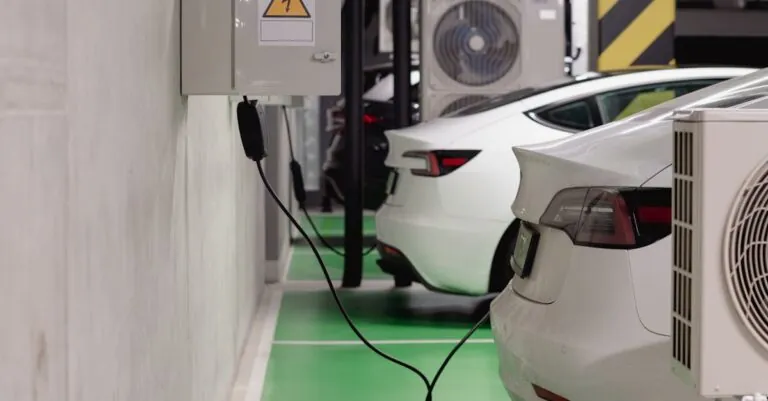Table of Contents
ToggleIn the vast expanse of space, where every ounce counts and precision is paramount, Micro-Electro-Mechanical Systems (MEMS) are making their mark. These tiny marvels pack a punch, offering innovative solutions that could make even the most seasoned astronaut raise an eyebrow. From sensors that detect minute changes in pressure to actuators that help maneuver spacecraft, MEMS are the unsung heroes of the cosmos.
Overview of MEMS Technology
Micro-Electro-Mechanical Systems (MEMS) represent a cutting-edge integration of mechanical and electrical components at a microscale. These systems leverage advanced fabrication techniques, enabling the creation of tiny devices that perform complex functions. MEMS technology encompasses various elements, including sensors, actuators, and microstructures, all critical for space applications.
Sensors, for instance, play a pivotal role in monitoring environmental conditions. They provide precise measurements for temperature, pressure, and acceleration. Such data is vital for spacecraft operation and mission success. Actuators facilitate movement and control systems in spacecraft, enhancing maneuverability and responsiveness.
The miniaturization of these components leads to significant advantages in space technology. Smaller devices reduce weight, which is essential for spacecraft design and fuel efficiency. MEMS devices also feature low power consumption, crucial for long-duration missions where energy resources are limited.
MEMS technology extends beyond sensors and actuators. Integrated circuits serve as the brain of these systems, enabling real-time data processing and decision-making. Their compact nature allows seamless integration into various spacecraft systems, improving overall functionality.
Increasingly, MEMS devices demonstrate resilience in harsh space environments. Their robust design withstands extreme temperatures and radiation exposure, ensuring reliability during missions. The combination of sensitivity, small size, and durability makes them indispensable in the aerospace industry.
Overall, MEMS technology embodies innovation that drives advancements in space exploration. Its capabilities and advantageous features continue shaping the future of spacecraft design and operation. Understanding this technology fosters continued progress in the quest for deeper exploration of our universe.
Applications of MEMS for Space Use
MEMS technology plays a crucial role in space applications, enhancing spacecraft functionality and performance. The innovative solutions provided by MEMS systems significantly improve the efficiency and reliability of space missions.
Sensors and Actuators
Sensors and actuators form the backbone of MEMS technology in space. These devices monitor environmental factors such as pressure, temperature, and acceleration with high precision. Accelerometers enable spacecraft navigation by detecting changes in motion. Pressure sensors contribute to system health monitoring, ensuring optimal performance during missions. Actuators allow control of various mechanisms, such as antennas and propulsion systems, facilitating maneuverability. Their compact size reduces weight while enhancing energy efficiency, important traits for space exploration.
Communication Systems
Communication systems leverage MEMS technology for improved data transmission in challenging environments. MEMS components integrate into antennas, increasing their performance while minimizing size. These small antennas support high-frequency operations, ensuring effective connectivity between spacecraft and ground control. Additionally, MEMS devices contribute to signal processing, enhancing the reliability of communications amid interference. The benefits of reduced power consumption further align with the stringent energy requirements of space missions, bolstering overall operational efficiency.
Advantages of MEMS in Space Missions
MEMS technology offers distinct advantages that enhance spacecraft functionality and mission success. Compact size and lightweight construction play significant roles in various aspects of aerospace engineering.
Size and Weight Benefits
Miniaturizing components leads to reduced weight, a critical factor in spacecraft design. Maintaining low mass allows for increased payload capacity, giving missions greater flexibility in carrying equipment. Smaller devices contribute to more efficient use of space within confined areas of spacecraft. It becomes easier to integrate multiple MEMS sensors and actuators without compromising overall vehicle mass. The lightweight materials used in MEMS designs mitigate stress on launch vehicles, promoting safer and more cost-effective missions.
Enhanced Performance
Improving performance through advanced MEMS technology boosts spacecraft capability. Sensors offer high precision in monitoring vital conditions, ensuring safer navigation and operation in space environments. Actuators facilitate quick responses to dynamic changes, enhancing maneuverability and control. Real-time data processing capabilities permit immediate assessment of environmental variables. Reliability under extreme temperatures and radiation conditions contributes to mission longevity. Enhanced communication systems, utilizing MEMS components, improve signal fidelity and reduce latency during transmissions, ultimately leading to more effective ground control interactions.
Challenges and Limitations of MEMS for Space Use
MEMS technology faces several challenges and limitations in space applications. Understanding these obstacles is crucial for maximizing its potential.
Environmental Factors
Extreme environmental conditions create significant challenges for MEMS devices in space. High levels of radiation can damage components, impacting performance and lifespan. Deep vacuum environments pose additional risks, including outgassing, which can affect device integrity. Significant temperature fluctuations further complicate operations. Effective thermal management is critical to ensure sensors and actuators operate efficiently at varying temperatures. Engineers must also address electromagnetic interference from cosmic radiation that can disrupt functionality. Implementing robust shielding techniques helps mitigate some environmental risks, yet designs must remain lightweight.
Reliability and Durability
Ensuring reliability and durability proves essential for MEMS deployed in space. Components must withstand long-term exposure to harsh conditions, including temperature extremes, vacuum, and radiation. Failure rates for MEMS can increase dramatically under these circumstances, impacting mission success. Testing methods must simulate space environments accurately to identify weaknesses. Companies focus on developing resilient materials and protective coatings to enhance longevity. Lifespan testing under extreme conditions helps verify performance expectations over extended missions. Continuous advancements in fabrication techniques improve MEMS durability, enhancing their viability for future space exploration.
Future Trends in MEMS for Space Use
Emerging trends in MEMS technology promise to revolutionize space applications. Increased integration of artificial intelligence into MEMS devices enhances autonomous functionalities. Such advancements allow for real-time decision-making, improving spacecraft navigation without constant ground control input.
Significant focus on radiation-hardened materials drives MEMS reliability in harsh environments. Recent research highlights developments in coatings that protect against radiation damage, extending component lifespan. Enhanced testing methods will simulate space conditions more accurately, identifying weaknesses before deployment.
Miniaturization continues to be a priority, facilitating the development of even smaller MEMS components. Smaller devices lead to optimized packaging and increased payload capacities on spacecraft. Enhanced collaboration among industry leaders and academic institutions fosters innovation in MEMS technologies, which accelerates the transition from theoretical concepts to practical applications.
Another emerging trend involves the use of MEMS in advanced propulsion systems. MEMS-based sensors can improve fuel management and thrust control. These advancements refine mission trajectories and enhance overall operational efficiency during long-duration missions.
The anticipated use of MEMS big data analytics further shapes future applications. By analyzing environmental data collected from MEMS sensors, predictive models can optimize mission planning. Such capability allows spacecraft to adapt quickly to unforeseen circumstances.
Investment in MEMS research and development is on the rise, supporting innovative technologies in the space sector. The increasing demand for lighter, more efficient systems encourages ongoing advancements. As these trends develop, the role of MEMS in space exploration is set to expand significantly, addressing the complex demands of future missions.
Conclusion
MEMS technology stands at the forefront of space exploration innovation. Its compact size and lightweight design significantly enhance spacecraft performance and efficiency. As the demands of future missions grow, the integration of advanced materials and artificial intelligence will further elevate the capabilities of MEMS devices.
Addressing the environmental challenges they face is crucial for their long-term reliability. Continued investment in research and development will ensure MEMS remain vital in navigating the complexities of space. Ultimately, the evolution of MEMS technology is set to redefine the landscape of aerospace applications, paving the way for groundbreaking advancements in exploration and communication.







